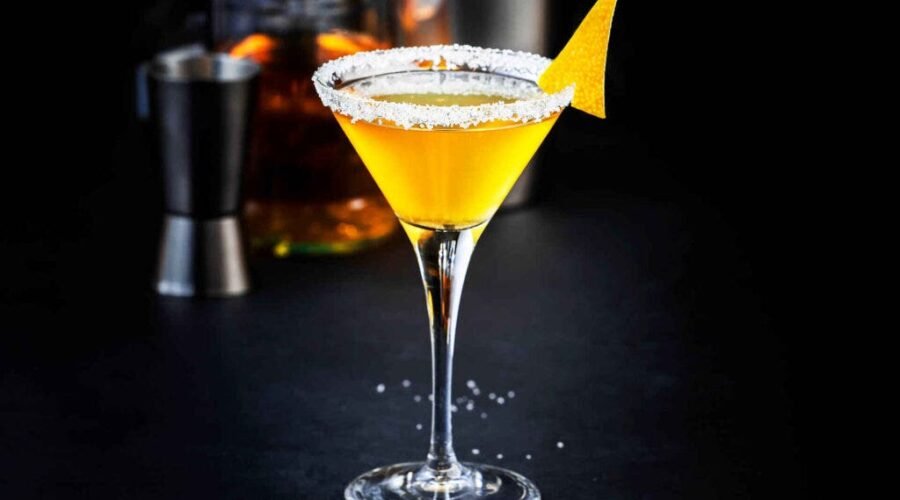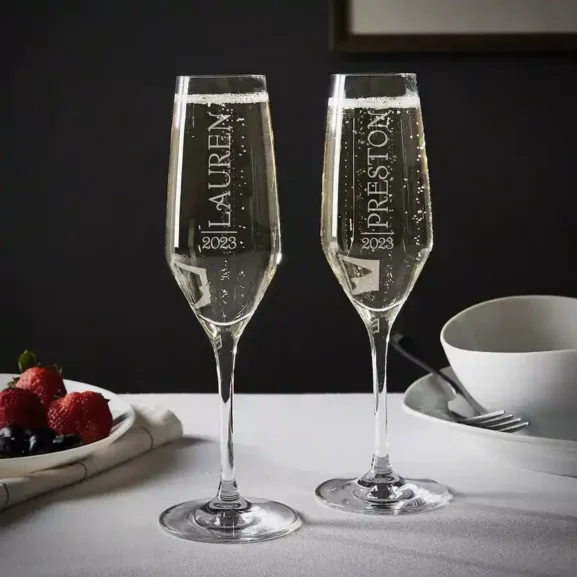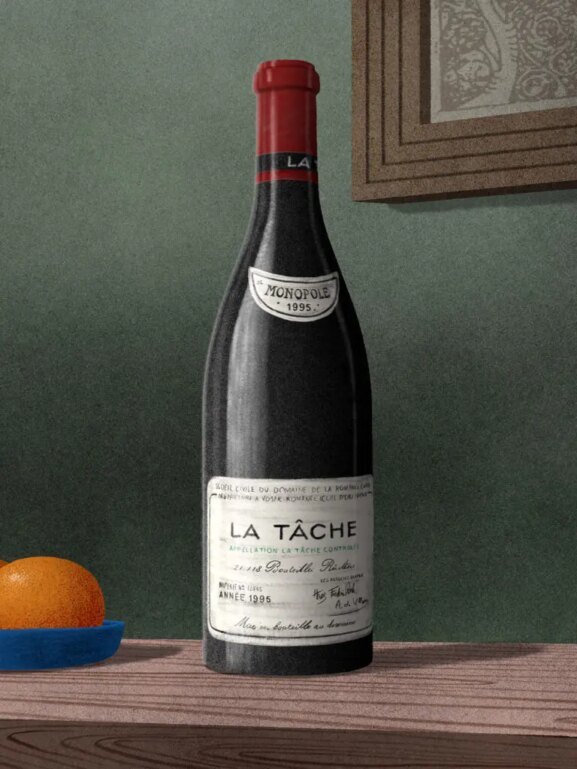The 8 Drinks That Defined Paris Cocktail Culture
If there’s been a better time to drink cocktails in Paris, Xavier Padovani didn’t see it.
“Twenty-five years ago, it was just hotel bars—period,” says the partner at Experimental, the hospitality group behind Experimental Cocktail Club. “It was expensive and it was all the same. Now, there’s so much variety.”
In cocktails, as in life, context is key. An array of social, economic, cultural and other factors contributed to the bar scene’s evolution from tuxedoed innovators in Prohibition-era luxury hotels to the diverse talents currently on display at cutting-edge cocktail bars citywide.
One could spend years analyzing the people and places responsible for Paris’ ongoing transformation. This collection of eight drinks aims to do something similarly ambitious: Codify over a century of liquid culture in one of the world’s most dynamic cities for food and drinks. In the spirit of Padovani, there’s no time like the present.
// Create the element
var script_68b59a8fc2bcf = document.createElement(“script”);
script_68b59a8fc2bcf.innerHTML = `
window.googletag = window.googletag || {cmd: []};
googletag.cmd.push(function() {
var adType = “leaderboard”;
var mapping;
var lbmapping = googletag.sizeMapping()
.addSize([1024, 0], [[970, 250], [970, 90], [1, 1], [728, 90]])
.addSize([728, 0], [[728, 90], [1, 1]])
.addSize([320, 0], [[1, 1], [300, 50], [300, 100], [320, 50], [320, 100]])
.addSize([0, 0], [[1, 1], [320, 50]])
.build();; // Size mapping for leaderboard ads
var medrecmapping = googletag.sizeMapping()
.addSize([1024, 0], [[300, 600],[300, 250]])
.addSize([728, 0], [300, 250])
.addSize([320, 0], [[1, 1],[300, 250]])
.addSize([0, 0], [[1, 1], [300, 250]])
.build(); // Size mapping for med rectengle ads
if(‘/39808611/article_page/article_leaderboard_1’ == ‘/39808611/article_page/article_leaderboard_1’
|| ‘/39808611/article_page/article_leaderboard_1’ == ‘/39808611/article_page/article_leaderboard_2’
|| ‘/39808611/article_page/article_leaderboard_1’ == ‘/39808611/article_page/article_leaderboard_3’) {
mapping = googletag.sizeMapping()
.addSize([1920, 0], [[728, 90]]) // >= 1920px
.addSize([1440, 0], [[728, 90]]) // 1440px-1919px
.addSize([730, 0], [[300, 250]]) // 730px-1439px
.addSize([0, 0], [[320, 100], [320, 50], [300, 100], [300, 50], [300, 250]]) // Up to 729px
.build();
} else {
mapping = adType == ‘leaderboard’ ? lbmapping : medrecmapping;
}
googletag.defineSlot(‘/39808611/article_page/article_leaderboard_1’, [],
‘div-gpt-ad-68b59a8fc2bcf’).addService(googletag.pubads()).defineSizeMapping(mapping);
googletag.pubads().enableSingleRequest();
googletag.pubads().collapseEmptyDivs();
googletag.display(‘div-gpt-ad-68b59a8fc2bcf’);
});
`;
// Append the script to the body
document.body.appendChild(script_68b59a8fc2bcf);
Sidecar
In the years following World War I, the Sidecar became a major attraction in Paris’ tony hotels. “In a widely copied 1923 article, Frank Meir of the Ritz Bar in Paris listed it as the second most popular of the nine cocktails that were ‘new since the war,’” Fernando Castellon writes in The Oxford Companion to Spirits & Cocktails. (If you’re curious, the bar’s top seller was the memorably named gin drink, the Monkey Gland.)
Esteem for the Sidecar went global. In the 1940s, Meier created a version with 1865 pre-phylloxera Cognac that sold for $5, or the modern equivalent of $82. “It was claimed, not without reason, that this was the beginning of luxury cocktails,” Castellon adds.

Bloody Mary
Success has many authors, but many believe that the Bloody Mary was created by Fernand Petiot, a bartender at Paris’ Harry’s Bar from 1919 to the mid-1930s. Petiot’s tenure “is said to have coincided with the arrival of the first tins of tomato juice from the United States, right after World War I,” Dale DeGroff writes in The Art of the Cocktail. Flush with far-flung ingredients, Petiot reportedly doctored a mix of tomato juice and vodka with citrus and spices, and a scarlet icon was born.
Prohibition-era drinks like the Sidecar and Boulevardier mostly fell out of fashion in Paris as the 20th century marched on, but Petiot’s invention remains in rotation in and beyond the city’s storied hotel bars. Over at Harry’s, which went on to open a location in Cannes and publish a book with a Bloody on its cover, the drink is still an attraction for global cocktail pilgrims eager for a Worcestershire-spiked taste of local lore.

A Wave of (Forgettable) Tropical Drinks
If the first few decades of 20th-century Paris were craft cocktail boom times—with innovative bartenders creating what are now considered canonical recipes—then the latter half might politely be called rebuilding years. Cocktails simply weren’t the focus of most bars or the people who drank at them.
“There are a lot of theories for this,” says Pierre-Charles Cros, one of Experimental’s cofounders. Explanations include influential wine and Champagne lobbies, and widespread availability of quality French spirits that were traditionally sipped neat, like Armagnac, Calvados and digestifs. “Part of the culture was like, ‘I’m accessing a good spirit, why should I modify or mix it?’” says Cros.
One short-lived exception was a wave of elaborately concocted tropical cocktails—“with the umbrella and the cherry,” Cros says—that briefly broke through in the 1980s. Treacly and too expensive for most bargoers, the trend “didn’t last,” he says. “It was a lot of accessories but no substance.”

Experience No.1
In 2007, Cros and two childhood friends, Olivier Bon and Romée De Goriainoff, opened Experimental Cocktail Club (ECC) in the Montorgueil neighborhood. It revolutionized Paris’ drinks landscape, creating and sustaining interest in complex craft drinks served in a vibey space at comparatively affordable prices. The impact was seismic: the Experimental team now operates bars, hotels and restaurants worldwide, and several ECC alums went on to open their own bars across the city.
ECC’s menu changes frequently, but one drink that has been served since day one is Experience 1, an elegant sipper made with vodka, elderflower cordial, fresh lemon juice, lemongrass and basil.
Nearly 20 years after its creation, Experience 1 remains relevant. “It could have gone out of style because of the elderflower—you saw that everywhere for a while—but it still works,” says Cros. “It’s one of our top sellers.”

Guêpe Verte
At Candelaria, a cavernous bar that opened in 2011 behind an assuming taqueria in the Marais, a signature cocktail is the Guêpe Verte, or green wasp. The drink combines muddled cucumber and cilantro with lime juice, agave nectar and housemade chile-infused tequila.
Barney O’Kane, cofounder of De Vie, a cocktail bar in Paris’ second arrondissement, considers the Guepe Verte “a modern classic,” noting how it introduced a generation of Parisians to craft agave spirits and culinary cocktails made with fresh produce. “It’s an iconic drink that helped shift what other bars served,” he says. With it, the Candelaria team “helped put a stamp on cocktail consciousness.”

Twisted Typhoon
Tiki drinks get a Parisian accent at Dirty Dick, a lively destination that opened in 2012 a former brothel (the owner kept the name) in the once-seedy Pigalle district.
Classics like Mai Tais and Penicillins are popular, but one of the bar’s enduring signature drinks is the Twisted Typhoon. Made with gin, fresh citrus, guava and passionfruit syrup, it’s a far cry from the cloying tropical concoctions of previous eras. Served over pebble ice, and garnished with a crisper drawer’s worth of herbs and a tiny bottle of Hendrick’s, the Twisted Typhoon demonstrates how, as a city’s cocktail talent and market matures, fruity festivity and fine-tuned craft can be mutually inclusive.

Watch the Throne
In 2014, the Le Syndicat opened behind an industrial-looking facade in the 10th arrondissement with a mission: to celebrate French heritage and what its founders call “grandpa spirits,” like Calvados, Armagnac and Marc de Bourgogne.
A highlight from its early days was Watch the Throne, which combined brown butter-infused Cognac with sweet vermouth, housemade flower syrup, fresh pineapple and lemon juice. Not only did it combine French culinary heritage with a regional spirit, it also widened the city’s now-expansive cocktail scene with an emphasis on homegrown ingredients.
// Create the element
var script_68b59a8fc4e05 = document.createElement(“script”);
script_68b59a8fc4e05.innerHTML = `
window.googletag = window.googletag || {cmd: []};
googletag.cmd.push(function() {
var adType = “leaderboard”;
var mapping;
var lbmapping = googletag.sizeMapping()
.addSize([1024, 0], [[970, 250], [970, 90], [1, 1], [728, 90]])
.addSize([728, 0], [[728, 90], [1, 1]])
.addSize([320, 0], [[1, 1], [300, 50], [300, 100], [320, 50], [320, 100]])
.addSize([0, 0], [[1, 1], [320, 50]])
.build();; // Size mapping for leaderboard ads
var medrecmapping = googletag.sizeMapping()
.addSize([1024, 0], [[300, 600],[300, 250]])
.addSize([728, 0], [300, 250])
.addSize([320, 0], [[1, 1],[300, 250]])
.addSize([0, 0], [[1, 1], [300, 250]])
.build(); // Size mapping for med rectengle ads
if(‘/39808611/article_page/article_leaderboard_2’ == ‘/39808611/article_page/article_leaderboard_1’
|| ‘/39808611/article_page/article_leaderboard_2’ == ‘/39808611/article_page/article_leaderboard_2’
|| ‘/39808611/article_page/article_leaderboard_2’ == ‘/39808611/article_page/article_leaderboard_3’) {
mapping = googletag.sizeMapping()
.addSize([1920, 0], [[728, 90]]) // >= 1920px
.addSize([1440, 0], [[728, 90]]) // 1440px-1919px
.addSize([730, 0], [[300, 250]]) // 730px-1439px
.addSize([0, 0], [[320, 100], [320, 50], [300, 100], [300, 50], [300, 250]]) // Up to 729px
.build();
} else {
mapping = adType == ‘leaderboard’ ? lbmapping : medrecmapping;
}
googletag.defineSlot(‘/39808611/article_page/article_leaderboard_2’, [],
‘div-gpt-ad-68b59a8fc4e05’).addService(googletag.pubads()).defineSizeMapping(mapping);
googletag.pubads().enableSingleRequest();
googletag.pubads().collapseEmptyDivs();
googletag.display(‘div-gpt-ad-68b59a8fc4e05’);
});
`;
// Append the script to the body
document.body.appendChild(script_68b59a8fc4e05);
“There’s room for everyone in Paris,” says Experimental’s Padovani. “If you want to go to a hotel bar and pay €30 for a cocktail, I’m sure you’re going to have a good time. And if you want to go to Syndicat and only drink French spirits, you’re going to have a good time again.”

Seasonal Sgroppino
On a list of influential Parisian drinks, a riff on a boozy Italian slushie is an unlikely inclusion. But the hyper-seasonal version that kicks off the tasting menus at De Vie demonstrates a new development in the city’s bar scene: highly conceptual, cocktail-driven dining.
When the bar opened, in spring 2025, the Sgroppino featured Chanteclerc apple sorbet with Normandy cider; the summertime version highlights refreshing melon. Each is paired with seasonal dishes created by De Vie’s chef, who previously worked at Paris’ Michelin-starred Frenchie restaurant.
“We’re seeing bars become a lot more experience-led,” says O’Kane, the De Vie founder. “It’s an exciting time.”
More French Travel Coverage
- In Paris, happy hour is taking a bite out of French apéro culture.
- Burgundy on a budget: visit the famed French region without breaking the bank.
- Where fairytale scenery meets cellars: 10 wineries to visit in Alsace.
- The 10 dreamiest wineries to visit in Provence.
- Six dark sky parks for wine travel beneath the stars.

New Arrival
Bar Culture Martini Glasses (Set of 2)
In Stock | $140
The post The 8 Drinks That Defined Paris Cocktail Culture appeared first on Wine Enthusiast.


